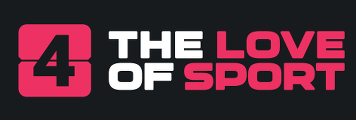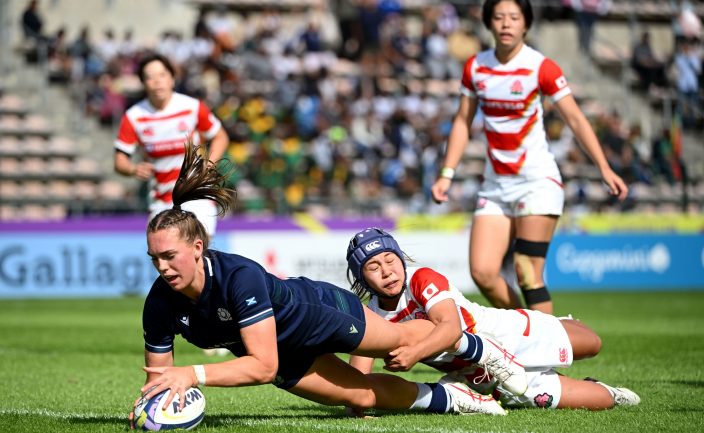The six sides involved with their current rankings: Australia (6th), Italy (9th), Japan (11th), Scotland (5th), South Africa (12th), Wales (10th).
They come nearly as close together as the WXV1 nations, so plenty of keen competition.
But in one respect this group is more limited: three form part of the Six Nations, so will know each other far better than the Wallaroos, the Sakura and the Boks. Though that sharpens local rivalries, it reduces the number of matches involving sides unfamilar with each other. Since WXV is a global enterprise, it’s the rarity of meetings that must count for more.
Ups and Down
It’s important to recall that promotion and relegation are not (yet) automatic between the three levels. That explains Ireland’s advance from bottom to top tier. They claimed third place in the 2024 Six Nations to ensure a leap into the big time. That’s another question for the organisers to debate before another repeat of WXV. It’s a highly complex business, so we could hardly expect immediate perfection; there are always likely to be dissatisfied customers, whichever structure is eventually agreed upon.
The ranking back-markers, Cymru, will take a lot of confidence from their win over the Wallaroos in Newport. It was a close-run thing (31-24), but just the shot in the arm they needed. They clung on to victory over the Azzurre at home in the last Six Nations, 22-20. Neither side finished full of confidence, managing only one win each and occupying the last two places. So the coaches have the additional problem of restoring confidence in their charges. Italy have lost one prolific try- scorer: Alyssa D’Incà has an injury that prevents her from travelling.
They came very close to snatching the title last year, winning all three matches, but they just missed out to Scotland.
The Wallaroos have a habit of coming good when it matters. They keep losing to their eternal adversaries, the Black Ferns, but even Scotland’s leap up to 5th, their best ever, still leaves them highly placed at 6th. Jo Yapp has had to concede unwelcome defeats since she took charge, but the squad feels refreshed and will be intent of proving their worth. Yapp has included four uncapped players and reinstated Michaela Leonard as captain after a brief experiment.
The Boks rely a lot on the power of their pack. It will be up to the backs to ensure they capitalise on possession gained. Recently they won a surprisingly convincing win over a garlanded but ageing Barbarians side 59-17, and defeated Spain 15-13 in Valladolid. They may yet prove the team most likely to take a giant step forward over the next year or two.
Preparations
All six have joined the fashion of preparing for the competition with warm-ups.
Australia have played Ireland (10-36) in Belfast, then Wales (14-31) in Newport. Add to that, an Australia A team just lost to Samoa 17-20 at Apia Park. The losses may reflect the Wallaroos lack of outward tours; they will still be a side to beat in Cape Town.
Japan played the USA away twice in August: two very close matches, an Eagles’ win 11-8 then 17-17. Later Italy beat Japan 24-8 in Piacenza. The Sakura have made more tours abroad than most of their competitors, but it’s still hard for them to make up for lack of size with pace, determination and accuracy.
Fixtures
All take place in Cape Town.
Friday, 27 September: South Africa v Japan, DHL Stadium
Saturday, 28 Australia v Wales, DHL Stadium; Italy v Wales, Athlone Sports Stadium
Friday 4 October Wales v Italy, Athlone Stadium
Saturday 5: Japan v Scotland; South Africa v Australia, both Athlone Stadium
Friday 11 October: Wales v Japan, Athlone Stadium
Saturday 12 October: South Africa v Italy; Australia v Scotland, both Athlone Stadium
Venues
Cape Town’s major stadium, the DHL, sits near the waterfront and has a capacity of 58,000. But it is being used for the first two matches only: the grand opening, as the Women Boks take on the Sakura; then the Wales-Australia clash the next day.
After that everyone decamps south-east to the Athlone Stadium, somewhat smaller at 34,000. Even so, both venues present the SARU with the challenge of attracting far larger crowds than attended last year’s WXV2. In effect, the DHL replaces the Danie Craven Stadium in Stellenbosch; the Athlone was used last year.
Attendances will be a concern for WXV in general. It must prove an attraction to the local populace, as well as a worldwide audience that can sit comfortably at home, watching TV or live stream cameras cover every match.








